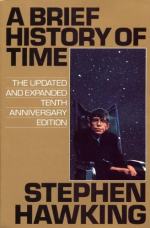
|
| Name: _________________________ | Period: ___________________ |
This quiz consists of 5 multiple choice and 5 short answer questions through Chapter 5 Elementary Particles and the Forces of Nature.
Multiple Choice Questions
1. Hawking is what type of physicist?
(a) Particle.
(b) Micro.
(c) Theoretical.
(d) Astro.
2. When was the uncertainty principle developed?
(a) 1920.
(b) 1926.
(c) 1919.
(d) 1929.
3. The universe is largely made up of what?
(a) Empty space.
(b) Dark matter.
(c) Stars.
(d) Planets.
4. All the particles in the universe are what type of spin?
(a) One.
(b) One-half.
(c) Zero.
(d) Two.
5. Who created the idea that a star can collapse and become a black hole?
(a) Arno Penzias.
(b) Robert Wilson.
(c) Alexander Friedmann.
(d) Roger Penrose.
Short Answer Questions
1. In the universe, objects move in what type of direction?
2. What type of theories try to bring the various virtual particles together as one entity, but do not include gravity?
3. What shape did Aristotle think the Earth was?
4. Quanta are made of what?
5. The development of what kind of technology depends upon the theory of quantum mechanics?
|
This section contains 182 words (approx. 1 page at 300 words per page) |

|




